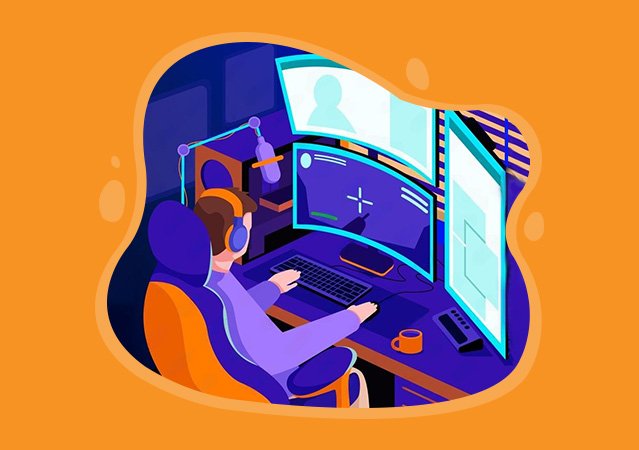When developing a game, the visual experience plays a critical role in its success. High-quality game art can make a game more engaging, immersive, and visually appealing to players. However, not every game development team has the resources to create stunning visuals in-house, and that’s where Hire Game Art Freelancer can be an excellent solution. This guide will help you navigate the process of finding and hiring the perfect game art freelancer for your project, using platforms like Paperub and other freelance networks.
1. Understand Your Game Art Needs
Before you begin searching for a game art freelancer, it’s essential to have a clear understanding of your project requirements. Different games need different styles and types of art, so knowing exactly what you need will help streamline the hiring process. Consider the following aspects:
- Game Art Style: Do you need 2D or 3D art? Are you looking for a cartoonish, realistic, pixelated, or fantasy style?
- Game Assets: What specific assets are needed? This could include character design, environment art, UI elements, icons, animations, etc.
- Project Scope: How much art is required, and how complex is it? Will it be a one-time project or ongoing work?
Clearly defining these factors will give you a better idea of what to look for when hiring a game art freelancer.
2. Where to Find Game Art Freelancers
There are various platforms and networks where you can find talented game art freelancers. Here are some of the best options:
- Paperub: A popular platform where you can easily find and hire game art freelancers. It allows you to post your job, review applications, and select the most suitable candidate.
- ArtStation: A platform primarily used by artists, where you can find portfolios of game art professionals. You can directly reach out to freelancers whose work matches your needs.
- Behance & Dribbble: Online portfolios where many freelance game artists showcase their work. These platforms are great for viewing the quality and style of an artist’s previous projects.
- Upwork & Fiverr: Freelance marketplaces where you can post your job and receive bids from game art freelancers. These platforms offer a wide range of skill levels and prices.
3. How to Evaluate Game Art Portfolios
A portfolio is a game artist’s resume. It’s essential to thoroughly review each freelancer's portfolio to assess whether their style and quality match your project’s requirements. Here’s how to effectively evaluate portfolios:
- Art Style Compatibility: Look for a portfolio that aligns with your game’s aesthetic. If your game requires a realistic style, the freelancer’s portfolio should have examples of realistic art.
- Versatility and Skill: Check if the freelancer has experience creating different types of assets (characters, environments, UI, animations, etc.). A versatile artist can be beneficial if your project requires a range of different elements.
- Previous Game Projects: Prior experience working on game projects is a plus. Artists who have worked in the gaming industry understand the specific requirements and limitations of game art.
4. Key Skills to Look for in a Game Art Freelancer
When reviewing applications and portfolios, it’s important to look for certain skills that indicate a freelancer’s ability to deliver high-quality work:
- Creativity: A good game artist should be able to bring original ideas to the table and design visually compelling art.
- Technical Proficiency: Look for skills in industry-standard software like Photoshop, Illustrator, Blender, Maya, and Unity. For 3D artists, knowledge of sculpting software like ZBrush is also essential.
- Attention to Detail: Game art often requires intricate details, especially for character design and environment art. A keen eye for detail ensures that the final product is polished and professional.
- Ability to Take Feedback: The best freelancers are those who can adapt to feedback and make revisions as needed. Effective communication and the ability to collaborate are crucial skills for any game art freelancer.
5. How to Write a Job Post for Hiring Game Art Freelancers
A well-written job post can help you attract the right candidates. Here’s what to include:
- Project Overview: Briefly describe your game and its visual style. Highlight what makes your project unique and exciting to work on.
- Detailed Art Requirements: Specify the type of art you need (2D/3D, characters, environments, animations, etc.). Be clear about the style, color scheme, and complexity.
- Skills & Software Proficiency: List the software and skills the freelancer should have experience with.
- Project Timeline: Indicate whether you need the assets completed within a specific timeframe.
- Budget: If possible, mention a budget range to attract freelancers who can work within your financial limits.
6. Interviewing and Assessing Game Art Freelancers
Once you have a list of potential candidates, the next step is to interview them to ensure they are the right fit for your project. Consider the following during the interview:
- Ask About Previous Experience: Inquire about past game projects they have worked on and how they handled similar requirements.
- Discuss Your Project Vision: Explain the overall vision for your game and see how they respond. A good freelancer will offer valuable insights and suggestions.
- Review Their Process: Understanding their workflow can help you determine how they manage tasks, deadlines, and revisions. A structured process is often a sign of professionalism.
- Test Assignment: If possible, give candidates a small paid test task to evaluate their skills and see if their work aligns with your expectations.
7. Setting Up the Project: Contracts and Agreements
Before you begin working with a game art freelancer, it’s crucial to establish a clear agreement to avoid any misunderstandings. A contract should include:
- Scope of Work: Clearly define the tasks and assets the freelancer is responsible for delivering.
- Deadlines and Milestones: Set realistic deadlines for each phase of the project. Breaking the project into smaller milestones can make it easier to track progress.
- Payment Terms: Specify the payment structure, including rates, milestones, and payment methods. Platforms like Paperub facilitate secure payments, ensuring peace of mind for both parties.
- Ownership & Licensing: Make sure you have full ownership of the final assets, and discuss any licensing terms if needed.
8. Benefits of Hiring a Game Art Freelancer
Hiring a game art freelancer can bring several benefits, especially if you’re working on an indie project or have limited resources. Here are a few key advantages:
- Cost-Effective: Freelancers often charge less than hiring a full-time in-house artist, making them a budget-friendly option.
- Flexibility: Freelancers can be hired on a per-project basis, allowing you to scale your team up or down as needed.
- Access to Specialized Skills: Freelancers come with diverse skill sets and experience levels. You can find experts in specific styles or types of game art, ensuring top-quality results.
9. Using Paperub to Hire Game Art Freelancers
Paperub is a trusted platform that makes it easy to find and hire talented game art freelancers. You can browse through profiles, view portfolios, and read reviews from other clients. Additionally, the platform ensures secure payments, making it a reliable choice for hiring freelancers. When you use Paperub, you get access to a wide range of skilled professionals, making it simpler to find the right match for your project.
10. Conclusion
Hiring the right game art freelancer can significantly impact the success of your game. By understanding your needs, reviewing portfolios, conducting thorough interviews, and setting clear agreements, you can find the perfect freelancer who can bring your game to life. Platforms like Paperub make the process of hiring game art freelancers straightforward, allowing you to focus on what you do best—creating an outstanding game.
Trending Articles
World-class articles, delivered weekly.
Django Developers
Java Developers
AWS Developers
Machine Learning Engineers
Data Scrapers
Node.js Developers & Programmers
C++ Programmers & Developers
Xero Developer
C# Developers & Programmers
Georgia, GA Python Developers
NC Python Developers
Mississippi, MS Python Developers
Tennessee, TN Python Developers
Colorado, CO Python Developers
Alabama, AL Python Developers
Alabama, AL Python Developers
Michigan, MI Python Developers
New Jersey, NJ Python Developers
Django Jobs
Web Data Scraping Jobs
Node.js Jobs
C++ Developer Jobs
API Jobs
C# Programming Jobs
TensorFlow Jobs
TensorFlow Jobs
TensorFlow Jobs
Data Analysis and Reporting Ser...
Web Programming & Development Se...
Website Builders & CMS Software Services
Join the Paperub® community

